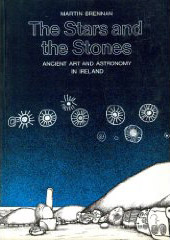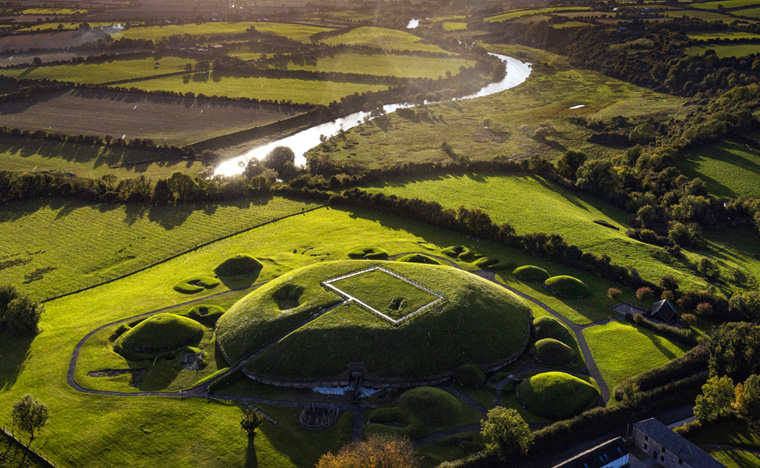Star gazers surface in megalithic Ireland
By Christopher Chippindale, author of Stonehenge Complete The Stars and the stones: Ancient Art and Astronomy in Ireland, published 1983 by Martin Brennan
The Stars and the stones: Ancient Art and Astronomy in Ireland, published 1983 by Martin Brennan
No science can claim an entire monopoly of interest over the field it studies. But fortunately a certain level of technical complexity and factual certainty protects most sciences from invasion by inept fantasists. It is not so with archaeology. For all its claims to scientific status, archaeology is at bottom a historical study, subject to taste and fashion. Technical complexity is often small; factual certainty slight; purpose, theory and method still argued over.
The most serious, and successful, of recent incursions into prehistorians' territory has been that of the "archaeoastronomers" (alias "astroarchaeologists"). The Hawkins-Hoyle image of Stonehenge as a Neolithic observatory-cum-computer has become the standard lay view.
The sympathetic work of Alexander Thom's megalithic science has taken more refuting but now seems to be in decline. Still, the star gazers are a persistent crowd, and another one is surfacing in Martin Brennan's Stars and Stones. The background is unpromising. Brennan is an American who has left rather a wild reputation behind him in Ireland. His book is full of hostility to archaeologists as a class, mutterings of conspiracy and tales of derring-do as he clambers secretly into sites over the barbed-wire defences and peeks beneath the archaeologists' covers. All this may mean the book will not be taken for what it holds underneath, a serious study making interesting claims.
The book examines the Irish passage-graves, the Neolithic chambered mounds of the Boyne valley and Loughcrew in central Ireland. The two great sites of Newgrange, recently and controversially restored, and Knowth, still under excavation and inaccessible, are among the finest megalithic constructions of Europe, and the great figures carved on their kerb and passage-stones the glories of megalithic art. Brennan seeks evidence for two ideas. Can a pattern be found in the sites and their orientation that proves a prehistoric astronomy? Does the art, with its characteristic motifs of chevrons, circles and spirals, show the same interest?
As a start, there is the "roof-box" at Newgrange, a slit built into the ceiling of the entrance passage that lets the rays of the rising Sun in to illuminate the chamber at the winter solstice. The roof-box, only known with certainty since 1967, is the best single evidence of prehistoric astronomy in the British Isles because the possibility of such an alignment by chance is slight.
Brennan has found comparable orientations for the other sites: at Dowth to the setting Sun at the winter solstice; at Knowth two passages, for the rising and setting Sun at the equinoxes; at Loughcrew also alignments on the cross-quarter days that fall midway between solstice and equinox; plus alignments to due north and south. These last raise a familiar statistical difficulty: any linear construction must point towards some direction, so that the more orientations are taken to be "significant" the more likely they are to arise by chance. Nevertheless, the core of the argument, the scheme of solstitial and equinoctial positioning in the Boyne group, makes a strong case.
For megalithic art, a beginning is provided by the circles with rays at Dowth that have always been called a "Sun" motif. Brennan sees crescents and wavy lines as Moon motifs arranged into calendars, the rays of Sun-motifs as calendrical markers and the components of sundials, and the spirals as models of the path of Sun shadows over a year. This is striking, but it must be limited by the difficulty of setting a meaning to any prehistoric art tradition which is not clearly representational; such geometrical motifs may stand for almost anything or nothing.
The book is profusely illustrated. The drawings are excellent; the text is clear but drifts off far too often into Irish stories of how Martin Brennan came about his revelations.
Christopher Chippindale is the author of Stonehenge Complete.
Boyne Valley Private Day Tour
 Immerse yourself in the rich heritage and culture of the Boyne Valley with our full-day private tours.
Visit Newgrange World Heritage site, explore the Hill of Slane, where Saint Patrick famously lit the Paschal fire.
Discover the Hill of Tara, the ancient seat of power for the High Kings of Ireland.
Book Now
Immerse yourself in the rich heritage and culture of the Boyne Valley with our full-day private tours.
Visit Newgrange World Heritage site, explore the Hill of Slane, where Saint Patrick famously lit the Paschal fire.
Discover the Hill of Tara, the ancient seat of power for the High Kings of Ireland.
Book Now


